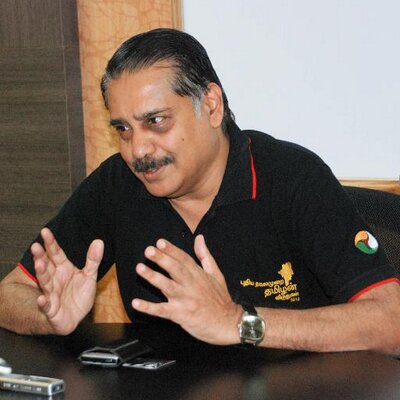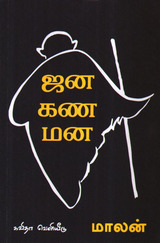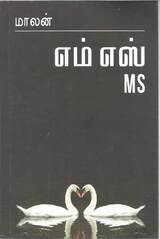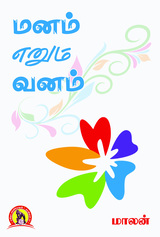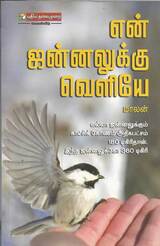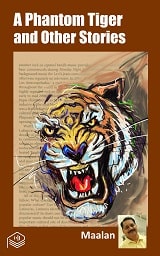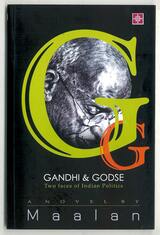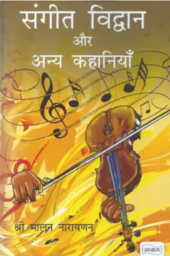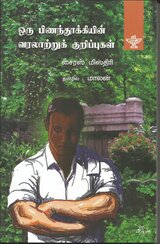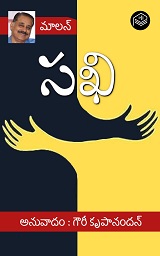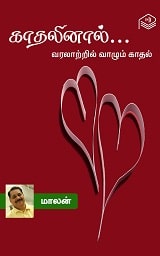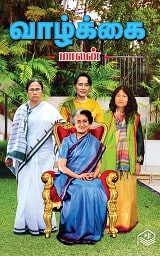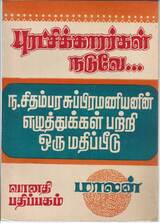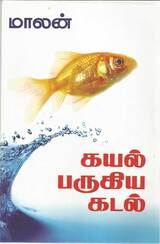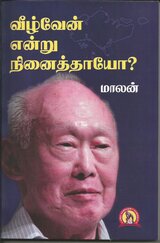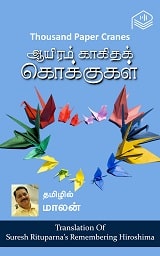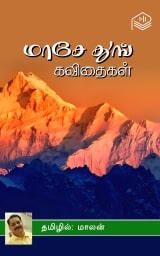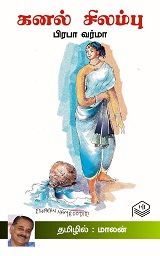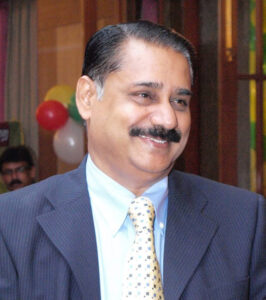Speech made at the seminar on Gandhi In Indian Literature on February 1, 2019 at the Festival of Letters organised by Sahitya Akademi at Delhi
Despite a prolific writer, amidst his political and social activism, Gandhi did not produce any creative work his 79 years of life. Yet he is a catalyst to a multitude of writers both in India and abroad. There are very few iconic leaders, who are remembered, celebrated, debated and criticized like him in literature. Every renowned writer had something to say about him.
Writings on Gandhi by foreign writers like Rolland Romain, (France) Edmund Jones (America) George Orwell (British) Ellen Horrup (Danish) and Pearl S.Buck are packs of either admiration or criticism. They were onlookers and not participants.
Unlike the western masters, as the roots of Indian writers were embedded in their native soil, they were drawn more closely to Gandhi, both to his personality and philosophy. For them, Gandhi symbolized the common man, his aspirations and hopes. Though their response to his philosophy varied from writer to writer, depending on their personality traits, it spurred them into action. Be it C.Rajagoplachari (Tamil) Sivaram Karanth (Kannada) Vaikom Basheer (Malayalam) the celebrated writers from the South, didn’t restrict themselves with words but plunged into action.
Malayalam
Basheer was 16, an impressionable age, when Gandhi visited Vaikom in 1924 to participate in the Satyagraha. He was already drawn into the nationalist movement by then, but Gandhi’s visit galvanized him. It is not difficult to sense his excitement over the meeting which is embedded in the lines “ Umma, I touched Gandhi!”, when he says proudly to his mother. This story Amma, which is a fragment of his autobiography, in short story form, written in 1937, is a record of the times and work of a patriot drawn towards Gandhi.
The core of the story is how he went from Vaikom to Calicut to take part in the salt satyagraha, and he narrates with his unmatched skill, on all the important incidents in his transformation as a fighter for freedom, and in doing so tells the story of countless other young people involved in the same struggle. He was beaten by the headmaster of the Vaikom English High School for wearing khadi, and later by Constable No.270 when he was arrested in the beach
“Two violent blows fell on my neck! Then he caught me by the shoulders and made me bend down. He began beating me. It sounded as if he were beating a copper pot. I counted up to seventeen, or perhaps it was twenty-seven. After this, I stopped counting. Why keep count?”
On release after nine months of rigorous imprisonment from Cannanore jail, he was possessed by a wish to kill Constable No 270. Basheer through a senior prison mate is reminded with Gandhi’s ahimsa concept: “Are you a satyagrahi? And if you want to kill, remember there is not a single policeman who deserves to live. The policeman is an indispensable part of the government. The poor people are mere instruments. What is the use of blaming them? Have patience. Go and see your father and mother.”
Here this literary piece transcends from a story into a record of the journey of a young boy who was transformed into a matured youth under the spell of Mahatma.
Though Gandhi’s political spell on Basheer was short-lived the conscious awakened by Gandhi lasted forever. It manifested in many ways in his writings His voice for the voiceless is because of Gandhi’s influence on his impressionable age.
And what about Thakazhi, another legendary contemporary writer of Basheer? Did he bother about the national happenings outside his area Kuttanadu? Yes, Gandhi touched him too. One of his stories ‘Death of Gandhiji’ is a multilayered story that raises complex questions on the role played by Gandhi in national awakening, on the events that led to the tragic partition of India and its aftermath, the communal tensions and bigotry that the national movement failed to tackle effectively and so on. The story is narrated by a refugee from West Punjab to Delhi.
Thakazhi’s yet another story ‘ From Karachi’ is also on the communal divide, a deep hurt, that tortured Mahatma and the nation which never healed. This is a story of two street urchins, Abdulla and Krishnakumar. They became friends and are depended on the garbage bin behind a hotel for their food. As news spread that Pakistan, a new promised land for Muslims is to be created Abdullah leaves for Pakistan deserting his friend. And the parting becomes painful for Krishnakumar as he has never viewed his friend from a communal angle. Thus the long wait begins for Krishnakumar. In the end, Abdullah returns disillusioned and sick and dies near the garbage bin in his friend’s arms.
Melodramatic, this is not one of the outstanding stories of Thakazhi but it cries loud and clear the Gandhi’s message that if people are driven to religious fanaticism, the victims are the poor and helpless.
I understand Thakazhi authored over 500 stories but only very few of them, like those illustrated here on Gandhi.
Though Vallathol Narayana Menon, to whom Gandhi is his master (Ente Gurunathan-1922) and his worthy successor G.Sankara Karup wrote fascinating poems on Gandhi and his ideals, in the genre of fiction, there are few works on Gandhian ideology. The Encyclopaedia of Indian Literature, a Sahitya Akademi publication, suggests it could be due to two factors. One among them is ‘the early advent of leftist forces, strengthened by Marxist ideology’
But the fervour for social change was there as witnessed in many creative fictional works. And they vaguely reflected Gandhian though not a firm commitment towards it. P.Kesavadev, though not a Gandhian, in his powerful novel on the Hindu Muslim conflict Bhranthalayam ( lunatic asylum) which ends with a note that Gandhi could alone show the way. Uroob in his major work, Sundarikalum Sundaranmarum bear a vague imprint of Gandhian idealism.
Some recent fictional go overboard. In N.S. Madhavan’s novel Lanthan Batheriyile Luthiniyakal one character, in a moment of hallucination, Gandhi kills Godse!
Kannada
Shivarama Karanth, a colossus of Kannada literature, like many men of his times was drawn to Gandhi when he was in college. The non-co-operation movement inspired him to leave his degree halfway and take to the promotion of spinning. When he was in his twenties, Karanth started a correspondence with Gandhi. Though we don’t have his side of the exchange, from the letters printed in the Collected Works of Mahatma Gandhi, we get a bare idea of what was on Karanth’s mind. In response to one of Karanth’s question, Gandhi assured him that to promote widow marriage—as Karanth was then doing—was not inconsistent with brahmacharya. Still, he saw it as a concession to human frailty: ‘when I advocate the marriage of child widows, I presume that they want the pleasure which all animals seek and some human beings only can restrain themselves from seeking’ Gandhi wrote. Karanth rejected Gandhi’s view that brahmacharya is superior to married life but continued to promote Khadi and swadeshi for about five years, till 1927.
Gandhi’s influence on Karath is prevalent though not directly, in the first of his novels Chomana Dudi which depicts the life of an untouchable. Choma, who works along with his children, for a landlord half of his age, had a dream or a fantasy to cultivate his own plot of land. He drowned his sorrows by playing his drums with all pride ”like a midudangam pandit”. Apart from presenting vivid images of the landscape, Karath describes the plight of Choma in sharp irony: “ The hut was his own—when not claimed by rains and storms”. “Plantation debts are like plantation malaria: once in their grip no release till death.”
U.R.Ananthamurthy, one of the outstanding storyteller in Kanada, has acknowledged the impact of Karanth’s Chomana Dudi on him. Ananthamurthy says that when he read Chomanana Dudi he suddenly became aware of the fact that people like Choma have an inner self which he had not realised earlier. He read Karanth’s novel when he was in high school and it prompted him to change his opinions on untouchables in the society. This led him to Gandhi and he started participating in processions as a young boy. He participated in Kodagu Satyagraha, a farmers’ movement for land rights. In fact, his first published work was a pamphlet written by him on the problems of farmers which he remembers selling himself. As he grew up, he came under the influence of socialist movements led by leaders like Ram Manohar Lohia.
Post independent India, in its urge for industrialization, was relegating Gandhian ideals to back burner. The romantic idealism of pre-independent India was giving way to realism in life. Literature, being the extension of life was also moving towards realism. Ananthamurthy belongs to post independent India where scepticism has already set on the institutions modelled on the west.
Ananthamurthy’s novel Aveste deals with an idealist who dreams to establish a just political system, which would be honest and beneficial for all in the society. But Krishnappa, the hero fails
Interestingly Gandhi way back in 1909 itself, after reading Thomas Carlyle’s, The French Revolution: A history came to the conclusion that ‘white nations’ were not an appropriate role model for India. This thought got reinforced in him when he read Jonathan Swift’s Gulliver’s Travels. He wrote a candid comment on Gulliver’s Travels: “ Gulliver’s Travels contains a so effective condemnation in an ironic vein of modern civilisation”
Ananthamurthy’s short stories such as Clip Joint, Sooryana Kudire argue that all that is western or modern cannot be accepted blindly
Despite the contributions of eminent writers through their masterpieces, and consistent effort to take Gandhi to the younger generation ( Gandhi Bhavan of Bangalore University published a monthly Bapu Vani to provide a forum for students to try their hands in Gandhian literature) a kind of dichotomy seems to exist in Kannada literature. Encyclopaedia of Indian Literature observes “ The Idealism and fervent patriotism of past years have given place to cynicism and disbelief” in Kannada literature. “ The Dalits question the very bonafides of Gandhiji and his works. A general tone of scepticism about Gandhism is present in such writings … The contemporary creative literature on Gandhi is, by and large, critical and abrasive” laments this Sahitya Akademi publication of 1988.
But Ramachandra Guha, who has written Gandhi’s biography in enormous volumes, said as recently as 2018, “There is anger among Dalit youths in Maharashtra and Uttar Pradesh against Gandhi. But somehow I don’t find it in Karnataka. Three Dalit intellectuals D.R. Nagaraj, Devanur Mahadeva, and Siddalingaiah find ways to admire Gandhi along with Ambedkar. I would go with them,”
The truth must be lying in between these two observations.
Telugu
Telugu people always have an awesome adulation for Gandhi. More than 100 books on Gandhi were published in one year, 1969, the birth centenary year of Gandhi. But if you look at their publication history on Gandhi, it won’t be surprising.
Unnava Lakshminarayana wrote a novel – Malapalli – almost a hundred years ago in 1921. The novel deals with a Dalit family who at one level are facing their own hardships owing to being ‘untouchables’ and on another level, become embroiled in British atrocities. The protagonist, the father of the Dalit family, Ramadasu believes in the methods of non-violence and non-cooperation propagated by Gandhi.
Interestingly the novel ends with India getting freedom. The author prophesized our freedom as early as 1921 when there were no signs of attaining it in the political horizon!
And the list grows longer:
Another early Telugu novel Obadiah written by Veluri Sivaramasastry, in the 1920s speaks about the Satyagraha movement.
Kanuparti Varalakshmamma, one of the very first women fiction writers, wrote stories based on Gandhi’s Swadeshi movement in the 30s and 40s
Adavi Bapiraju was a novelist of the 30s and 40s. Both his novels Narayana Rao and Toophan have Gandhian thought as a backdrop
Vuppala Lakshmana Rao tried a new form (in 1954) in his novel Athadu-Aame. It was a novel written in the form of a diary of a husband and his wife. The wife’s diary is mainly on the influence of Gandhi’s teachings on her and the Telugu society of that era, in general
A novel, considered interesting by critics, is Kollayigattithenemi ( ‘what if he wears a loincloth only?’) by Mahidhara Rammohan Rao. This title is first line of a poem by a popular poet Basavaraja Apparao. This novel written at a time when Gandhi visited Krishna district, is an account of Gandhi’s simplicity.
Chalam, otherwise a feminist writer wrote short stories on Gandhi ’s non-violence and satyagraha. One popular example is Suseela
In some Telugu, fiction one can find Gandhi’s speeches are interspersed verbatim in the novels and short stories. One can find this in the works of Balivada Kantarao, Bhamidipati Ramagopalam, T. Patanjali Sastry and Dada Hayat
By and large, the Gandhian concepts that are portrayed in Telugu fiction are Satyagraha, Swadeshi, and Harijan Upliftment.
Tamil
Gandhian thoughts in Tamil, both in fictional form and through journals were spearheaded by his “conscience keeper” C.Rajagoplachari more popularly known as Rajaji. This former Governor General is revered as one of the good short story writers of the early era. He has 3 short story collections and was a Sahitya Akademi Awardee.
He was the first Chief Minister to introduce Prohibition in Tamilnadu and it is no surprise that his stories propagate against the evils of liquor, one of the concepts close to Gandhi’s heart.
His Dikkatra Parvathy was later made into a film on a shoestring budget won a national award for Singeetham Srinivasa Rao. In mid-seventies, Ray’s Pather Panjali became the touchstone for young filmmakers and Srinivasa Rao was no exception. As Ray ’s work was based on a classic work literature – by Bibhutibhusan Bandopadhyay- Rao also decided that his film would be based on a literary work Dikkarta Parvathy. Ray hired Ravi Shankar to score music for his film and Rao too chose a classical musician Chiti Babu to compose the soundtrack.
Dikkarta Parvathi is the story of Parvathi, a young happy girl married to a loving husband Karupan. Though poor, her life is blissful with loving parents in law and doting husband. In order to increase his earnings, Karupan borrows money from a money lender and buys a cart. He makes a decent income, decent enough to pay his debt, but as fate would have it he was He was inducted into drinking toddy by his cousin and gets addicted to it. Miseries and hardships follow. As liquor drains his money, he was unable to pay his debt and caught into a debt trap. Because of his neglect, he loses his child and Bullock. Parvathi’s life becomes harder. Availing his inability to pay the debt, the money lender’s son sexually exploits Parvathi. Coming to know this Karupan kills him. Police arrest him and prosecute him. On the advice of lawyers, she admits in the court that she committed adultery hoping it will fetch release of her husband. But things take the worst turn. Husband is sentenced to imprisonment, Family deserts her. And finally, she commits suicide.
Though this a story of woe and hardship, Rajaji restrains himself from turning it into a melodrama. At the same time, he sends in a message, somewhat subliminally as he is more concerned about the message than the medium. All his stories carry either explicitly or subliminally a message that is inspired by Gandhi.
Fiction on Gandhi in Tamil can broadly be classified into three categories: 1.Works espousing Gandhian values directly or indirectly.2. Fiction with protagonists influenced by Gandhian philosophy/programs 2. Gandhi himself appearing as a character.
If Rajaji’s works represent the first category, Kalki R.Krishnamurthy’s Alai Osai belongs to the second and third categories. Kalki, a Gandhian and a freedom fighter himself, serialised Alai Osai in his weekly magazine Kalki, for over 70 weeks. He considered it as his masterpiece. This Gandhian novel created a sort of history when it was published as a book, as it sold fifty thousand copies in a span of just four days, in 1953. It received Sahitya Akademi award in 1956
It has a complex plot and shares many elements in a vast canvas and hence it is difficult to draw its synopsis in a few lines. But let me try to give a gist. Sita, the main character, is born in Bombay, arrives in Rajampettai, an imaginary but a typical village in Cauvery delta, to visit her uncle, but ends up in marrying Soundararaghavan, in an unexpected love at first sight. She goes to Chennai and Delhi and gets abducted by the minions of Rani of Rajnipur and later arrives in riot-torn Calcutta where she was imprisoned on mistaken identity. She reunites her estranged husband in Punjab and gets caught in the riots that followed tragic partition. After a harrowing journey, she reaches Delhi just in time to see Gandhi’s corpse in his funeral.
Gandhi is depicted in the novel as a character in an unusual manner. He is seen primarily through the perspectives of Sita. Yet Sita’s spiritual interaction with Gandhi is a major motif in the novel. After a dramatic altercation with her cousin, Sita leaves her cousin’s home after taking a pledge. Kalki portrays the scene as below: “ There was a dim blue light in the front room which lit the scarred visage of Mahatma Gandhi. The holy appearance of Mahatma with his peaceful smile and eyes that radiated kindness made Sita feel as if Gandhiji was there in person to bless her. She felt that it was good omen Sita put her bag and bowed to Mahatma’s portrait. She prayed, “ Father, bless me. Give me the confidence to walk the path I am going to choose with unwavering determination” She was not entirely satisfied with her prayer. Something was missing. She thought till she discovered a cure for that malady
“Gandhi, God of kindness! I am leaving this house to travel alone, relying upon your grace. In the path I will walk from now onwards, no matter what sufferings I undergo and what obstacles I meet, I will never do anything which you would judge improper. In any situation, I will ask myself whether Mahatma Gandhi will approve of this course of action and confirm to myself that it would be so before embarking upon it. I take this vow in your presence. I also seek from your grace the strength to fulfil this vow.”
Aklan, a recipient of various regional and national awards for his works, including Bharatiya Jnanpith, is another writer whose works are soaked with Gandhian idealism. His Puthu Vellam is a typical example. This novel revolves around Murugayyan a rich village youth influenced by Gandhian philosophies. He is drawn towards the independent struggle when he is in college and is inspired by Gandhi’s Ahimsa principle. For his involvement in the non co-operation movement, he is sentenced to jail for 3 years and dismissed from his college as well. When he returns to the village he finds that his father has lost all his wealth to a cunning friend. He moves to Madras and faces hardships and insults at his relative’s home and works as an itinerant vendor on the beach and as a rickshaw puller. After many ups and downs like a piece of wood in the flood, he settles as a coal miner in Andra Pradesh with his love.
Throughout the novel, at every given opportunity, the protagonist thunders on Gandhi’s ideals and lauds Gandhi. “ The British are fools. They didn’t realise that imprisoned Gandhi could unleash the people’s power more fiercely than a free Gandhi” says the hero at one occasion. However, Akilan leads the novel in a racy style like a film sustaining readers interest.
Similar such novels abound in popular Tamil magazines in the 60’s and ’70s and Na. Parthasarathi’s Athmavain Ragangal is one such work. It regrets about the moral turpitude and ethical degradation of post-Independent India as the author sees the Gandhian values are lost in politics and in society
It is not every writer who wrote about Gandhi in Tamil lauds him for his principles. Writers born after Independence had a critical approach to his politics. My novel Jana Gana Mana, where Gandhi himself is a character, is a story narrated by a father to his son Sugan. It raises questions on the causes that led to his assassination. I do not want to elaborate on my own work, as it may be construed as blowing one’s own trumpet. But Please let me share from the review appeared in the journal of Sahitya Akademi, Indian Literature ( No 281, May –June 2014):” The bigger question is who really killed Gandhi? Is it a few individuals or a system or a political conflict or something else? How did it impact society? Maalan urges Sugan (and us) to think on these lines”
Another writer, Vidya Subramaniam, in her novel, Uppu Kanakku, based on the Salt March, makes a veiled condemnation through a Satyagrahi character on the stance of Gandhi on Bhagat Singh’s execution:
“ “And do you know that in the North there are many young people who are opposed to this pact?”
“But why?”
“Do you at least know that the twenty-six-year-old young lion-hearted Bhagat Singh was hanged in the Lahore Central Prison exactly six days ago?”
“I read about it in the newspaper. I was much agitated and deeply disturbed that there was no one to save him and the other young fighters.”
“Many of the satyagrahis, on their release, were planning to go to Delhi to raise their voices for saving Bhagat Singh. I too wished to go, and so I went there. Nehru, Malaviya, Patel and others pleaded with Gandhiji to do something to stop the execution. We had also written a petition to Gandhiji, signed by all of us, asking him to intervene to get Bhagat Singh released. Thousands of young people had assembled before the house where he was staying and sat in silent prayer for Bhagat Singh, and hoping that Gandhiji would be able to do something
“On the day fixed for the execution, very early in the morning, Nehru and Malaviya came in a great hurry to see Gandhiji. It was a day of a vow of silence for Gandhiji. Malaviya pleaded with Gandhiji that the two of them and Patel and Nehru should send a telegram to the British government appealing to them to spare Bhagat Singh’s life, and meanwhile appeal to the Governor-General to with-hold the sentence.
Mahatma Gandhi immediately drew a sheet of paper and wrote on it,
“I have already done all that I can possibly do. Now it is only God’s Will that will prevail.”
After reading it, Nehru looked angrily at the Mahatma and said, “All right, Bapuji. Let countless young flowers of this country fall to the ground; while the Bhagat Singhs of this land are led to the gallows, like the Buddha who renounced the world, you may sit cross-legged at your spinning wheel, and go on with your spinning. If you had only postponed signing your pact with the Viceroy by a week, you could have proudly signed it with Bhagat Sigh’s blood.”
When all the young volunteers who had gathered heard this, they raised slogans against Gandhiji. Bhagat Singh and his friends were reported to have walked briskly, like young bridegrooms, to the gallows and kissed the noose that was going to kill them. On that day in Delhi, I wept the whole day as if it was my own son who had died. What a brave man Bhagat Singh was! He had chosen the path of violence for winning freedom for the country. That too calls for great courage. The joy of my release from prison, I felt, had also been killed by the noose.”
Numerous short stories were written in Tamil on Gandhi by a variety of writers.C.S. Chellappa, a Sahitya Akademi awardee and a freedom fighter came out with an anthology of 12 short stories, Gandhi Yuga Kathaigal in 1964. His short story titled Sathyagrahi is an outstanding one. When listed, the stories stand testimony to the plurality of Tamil literature. Let me cite few from the list: Puthiya Nandan by Pudumai Pithan, Ullum Puramum by R.Chudamani, Pathach Choru by B.S.Ramiah, Gandhi by Asokamitran, many stories of Jyothirlatha Girija, Pirithoru Iravu by Deva Bharathi, Gandhiyodu Pesuven by S.Ramakrishnan (This year’s awardee), Arokanam by Suneel Krishnan. (This year’s Yuva Puraskar awardee) The list is endless and what I have cited is no by means is exhaustive. What is interesting is, from the veteran Rajaji to the young Suneel Krishnan every one has something to laud or lament about Gandhi.
Despite so much of writing on Gandhi by writers of different generations Gandhi still remains as an enigma, if not the proverbial elephant amidst the blinds. Every writer chooses a theme or subject that attracts him most. It may be his fight against Untouchability, or liquor, or promotion of Khadi, or rural economy, religious amity, non-violence, Satyagraha, Salt March or even his political blunders. But a complete comprehensive picture is still eluding.
***

